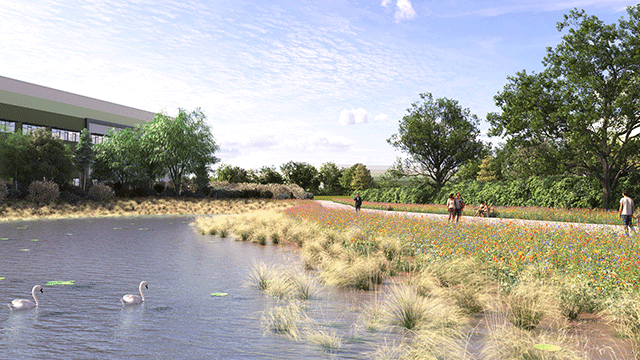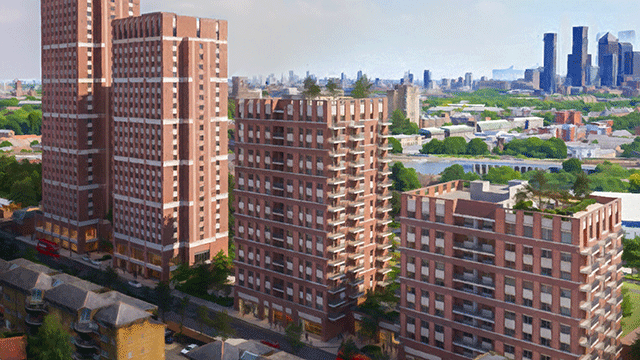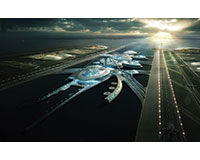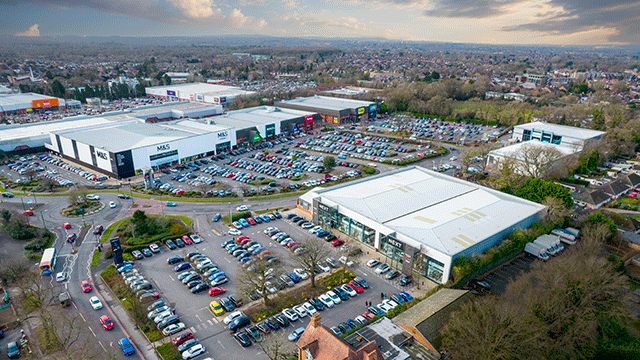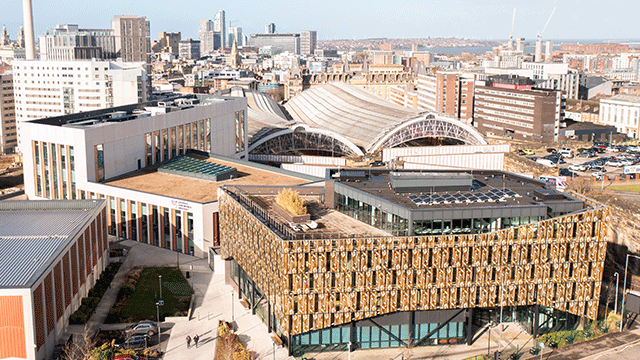According to futurologists, a lot will have changed about air travel by 2030. We will buy tickets and check in online, and drop our bags at the McDonald’s next to the office. We will fly to Sydney in under two hours by spaceship, while shorter journeys will be by Hyperloop.
Our baggage will be processed automatically, and so will we – security-screened from the moment we enter the airport and body-scanned by the boarding gates. And although we will still want to buy the latest bestseller at the airport, we will simply download it to our smart glasses.
But there is another aspect of air travel that may be different by 2030, if a coalition of powerful lobbyists gets its way. And it is one that could have a huge impact on the UK’s property markets.
Heathrow, the largest airport in Europe and third-largest in the world, may become a thing of the past.
In July, London mayor Boris Johnson detailed plans to bulldoze Heathrow and open a new “hub” in the Thames Estuary. When the mayor first began talking up the idea in 2008, many dismissed it as a pipe-dream and dubbed the scheme Boris Island.
“Now it has emerged as the main front-runner against Heathrow,” says Tom Leahy, associate director of research at Lambert Smith Hampton and author of a recent report entitled UK Airport Strategy – Dicing with the
Property Market.
“This rise to prominence has been largely due to a number of high-profile figures – Boris Johnson, Norman Foster et al – who have campaigned vigorously on its behalf,” he says.
Not to mention the countless, and very pretty, computer-generated images (pictured) of a brand new airport that have filled the newspapers.
Or the promise that an estuary hub would simultaneously solve all of Britain’s air-transport problems and stop that nasty noise pollution from ruining a trip to Windsor Castle.
“In many respects, this is the most ambitious of all the airport proposals, the least contentious, the easiest and the most cost-effective solution,”
says Ian Mulcahey, managing director of architect Gensler, which has teamed up with development agency Testrad to submit plans for a six-runway airport in the estuary.
They say their proposal for London Britannia Airport is the only option with the scale of infrastructure to be a truly world-class hub.
And it has been done before – successfully. Kai-Tak airport in Hong Kong was space-starved, poorly located and downright dangerous. The building of a new airport on an artificial island at Chep Lak Kok not only freed up prime Kowloon land for redevelopment, but also allowed Hong Kong to develop as a thriving transport and logistics hub.
But it is this question of infrastructure that is absolutely vital. As any shed-head knows, Heathrow is far more than an airport – it is an entire market.
“Almost 1.5m tonnes of cargo passes through Heathrow every year and the surrounding industrial market has grown and developed to deal with this large volume of goods,” says Leahy.
With more than 30m sq ft of industrial space within a four-mile radius of the airport, and some of the most expensive warehousing in the world, it is arguably the most important industrial market in the UK. Because of this, many are unimpressed by plans for a new hub to the east.
“I would agree with Boris on most of the arguments, in particular that we need a four-runway airport,” says David Sleath, chief executive of SEGRO, which owns 6m sq ft of airside, landside and built-to-suit space within two miles of Heathrow. “The thing I disagree with is the punchline.”
Sleath reasons that the collateral damage to the industrial market caused by building a new hub would be catastrophic, primarily because Heathrow, and all that depends on it, would become obsolete.
“The first thing that is pretty clear is that a new Thames Estuary airport would mean Heathrow would have to close,” he says. “It is not feasible to have both. The airlines would have to transfer.”
LSH’s Leahy adds: “Keeping it open would negate all the advantages gained by an increase in hub capacity.”
Dual hubs, such as at Milan, and multi-hubs have been tried before, but not one has been regarded as a success story, or has been done on the scale that would be required for London.
And, according to Leahy’s figures, the impact of closing Heathrow would be nothing short of apocalyptic. “Occupier demand for the 32m sq ft of industrial stock in the Heathrow market would almost completely disappear,” he says.
Leahy estimates that the premium paid for industrial space close to Heathrow is 50-60%. “With the airport gone, that premium would disappear,” he says.
“Using an average value of £165 per sq ft, it is possible to estimate the total value of the industrial stock around Heathrow at approximately £5.3bn.”
Which means that the estimated loss of property value caused by the closure of Heathrow would be around £2.5bn.
“The true loss would probably be much greater, especially as it ripples out to the west and east,” Leahy adds.
But at ground zero, Heathrow itself, there is a substantial property market within the airport’s boundaries, with more than 15m sq ft servicing the needs of 280 tenants.
“This ranges from check-in desks to office space, cargo warehousing, aircraft maintenance sheds, restaurants and shops,” says Leahy.
Ownership of the on-airport property is split between Heathrow Airport, which owns and manages the terminals and aircraft stands, SEGRO and Aviva’s Airport Property Partnership and SWIP, which own most of the cargo warehousing and on-airport offices to the north of the terminal buildings.
SEGRO’s Sleath says not only would the values be chipped for this space, but most would become worthless. “There is 20m sq ft of space in the immediate vicinity,” he says. “If Heathrow were to close, that would become instantly redundant.” This would wipe an estimated £3.3bn off the ledger.
Bridget Outtrim, director of industrial and logistics at Jones Lang LaSalle, adds: “If a new airport in the Thames Estuary were to offer more routes and scheduled services than Heathrow, air cargo operators would go there.”
As part of SEGRO’s submission to the Davies Commission, it surveyed 77 occupiers and businesses around Heathrow. Sleath says: “The very clear view was that Heathrow was critical to their business. They backed expansion and only 50% said they would relocate to a new hub. That means there is a potential for a significant number to leave the area, close shop or quit the
UK as a whole.
“They will look to go where there will be most growth in long-haul freight – and there are already big competitors to London in Europe.”
So, what will happen to Heathrow – a 12.4 sq km site in itself – if plans for Boris Island or one of its siblings get the green light?
The mayor says that far from becoming “a tumbleweed-infested ghost town or a waste land”, he envisages it being redeveloped as a garden city or new Royal borough, housing 250,000 people.
“Of course, moving Heathrow will, from a property point of view, create opportunity,” say Sleath. “And we will certainly be looking at what part our land holdings could play in that. But the risk is how long that will take and what damage it will cause in the meantime.”
But Sleath is circumspect about what SEGRO would do if the Davies Commission recommends a new hub in the east. “There would be new opportunities for warehousing and so on in Thames Gateway,” he says. “And housing. How are the workers going to get there? You would have to have a massive number of homes built.”
But regardless of the pretty pictures, the appeal of starting again in the estuary and the growing alliance pushing for a new airport, Sleath thinks the proposal will fall down for a good, old-fashioned reason – cost.
“I think an airport in the estuary is a very unlikely outcome,” he says. “The business case for expanding Heathrow is much stronger on cost, timescales, and so on. It would be an extremely expensive exercise to replace the facilities.”
And replicating the market around it would be even more costly, says Leahy. This work would have to be added to the £50bn price tag for the new airport itself, and the £20bn compensation costs incurred by closing Heathrow.
“Moreover, rising property construction costs mean the cost of replacing this stock would be more than the value of the existing stock,” he adds.
And even if all this new infrastructure were to be plugged in, Sleath argues: “From an access point of view in the rest of the country, the east of London just doesn’t make sense.”
JLL’s Outtrim agrees. “Air cargo operators like being at Heathrow because a lot of air cargo is actually trucked by road,” she says. “Heathrow’s location, west of London near the M25, M3 and M4, is better placed to support this than the Thames Estuary.”
And the trump card of the new hub – that it is well away from residential areas – is also a fallacy, they argue.
“The mayor says Heathrow is in the wrong place because it is too close to a busy urban area,” says Sleath. “But that is the reverse of what happened. That area became busy and urban because of Heathrow. “I don’t think it will have much impact in the short term.”
Occupiers appear to agree, with Rolls-Royce signing a new 25-year lease for its services facility at Heathrow in March. “But eventually the uncertainty will start to undermine confidence and that will impact our business,” Sleath adds. As ever, uncertainty is the main fear.
“Even if a new hub is built, it will be decades before it is operational. So it is difficult to say what we would do, but we would certainly have time to plan.”
Sleath pauses, perhaps mulling over the idea. “It could represent quite an attractive proposal,” he says.
“But my biggest concern is that the debate proves too difficult and gets kicked into the long grass. If no decision is made on where that expansion is going to be, where that capacity is going to come from, we will suffer.
“Indecision would be far worse than any decision.”
And as for following the lead of Hong Kong? Although the new Hong Kong International Airport lives up to all the pretty computer images, it is worth remembering that the Kai Tak airport closed in 1998 and has still not been redeveloped.
The Davies Commission
In less than two years, the Airports Commission headed by Sir Howard Davies will make its final recommendations about the future of the UK’s airports. The focus is on London, and increasing capacity to allow it to have a truly international hub.
In July, the commission stated that it was looking into various iterations of three options:
1 Increase capacity at Heathrow.
2 Increase capacity at Stansted, Gatwick and Heathrow and improve connectivity to provide a dual or multi-hub.
3 Build a new airport somewhere in the Thames Estuary.
As well as proposals for a new hub on the Isle of Grain, plans have been drafted for an artificial island in the estuary itself.
A scheme put forward by the Co-operative wing of the Labour party would see local residents quarter-own a new Heathrow runway.
Another plan, by architects Büro
für Mehr, would turn Heathrow into
the world’s first drive-through subterranean airport, to liberate the land above for property development.




